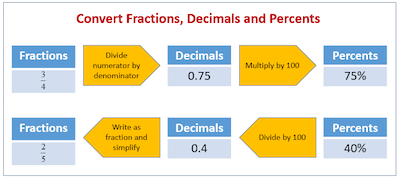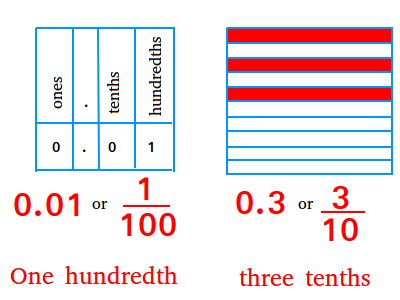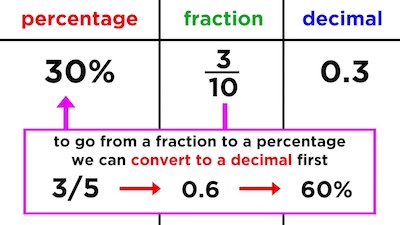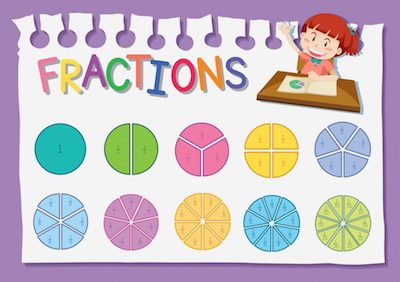There’s no question that many students fail to understand decimals the right way. However, it’s important to keep in mind that as soon as you understand the basic concepts, you won’t struggle with decimals ever again.
Check out our fraction calculator.
Writing And Reading Decimals
One of the things that we realized is that most students simply don’t know how to write or read decimals. So, here’s an example.

In order to write or read decimals, you need to follow the next steps:
Step #1: First, read the digits to the left of the decimal point as a whole number.
Step #2: Say “and” for the decimal point.
Step #3: Read the digits to the right of the decimal point as a whole number.
Step #4: Say the place name of the last digit on the right.
Make sure to use out decimal to fraction calculator.
So, let’s take this into practice. Imagine that you want to write or read the decimal: 8278.9670.
Step #1: First, read the digits to the left of the decimal point as a whole number:
The digits to the left of the decimal point is the number 8278 and you can read it as eight thousand, two hundred seventy-eight.
Step #2: Say and for the decimal point.
Step #3: Read the digits to the right of the decimal point as a whole number:
The digits to the right of the decimal point is the number 9670 and we can read it as nine thousand, six hundred seventy.
Step #4: Say the place name of the last digit on the right.
The last digit on the right is 0 and its place name is ten-thousandths.
Putting it all together, we get eight thousand, two hundred seventy-eight and nine thousand, six hundred seventy ten-thousandths.
Looking for a fraction to decimal calculator?
Here are other examples:
25.578 is read twenty-five and five hundred seventy-eight thousandths.
7000.14 is read seven thousand and fourteen hundredths.
0.002 is read two thousandths.
Notice that for the example right above, there is no need to say zero and two thousandths.
250.00035 is read two hundred fifty and thirty five hundred-thousandths.
10.061 is read ten and sixty-one thousandths.
7001.01 is read seven thousand, one and one hundredth.
0.0020 is read twenty ten-thousandths.
Notice again that there is no need to say zero and twenty ten-thousandths.
488.53846 is read four hundred eighty-eight and fifty-three thousand, eight hundred forty-six hundred-thousandths.
Comparing Decimals
In what concerns to comparing decimals, it is a pretty straightforward topic.
Simply put, you first need to compare the whole numbers to the left of the decimal point. In case they are different, the smaller decimal number is the one with the smaller whole number.
Let’s say that you want to compare the decimals 52.432 with 45.989.
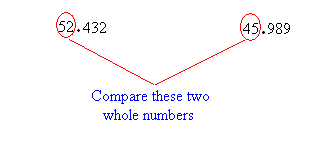
Since 52 is bigger than 45, the bigger decimal number is 52.432. So, you can then write:
2.432 > 45.989 or 45.989 < 52.989
In case you are comparing two decimal numbers that have equal whole parts, then you need to compare the whole number to the right of the decimal point.
The smaller decimal number is the one with the smaller whole number on the right of the decimal point.
Let’s say that you want to compare the decimals 60.802 with 60.504.
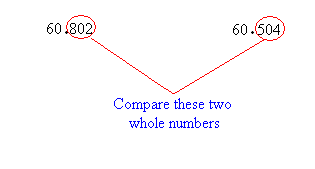
Since the whole numbers to the left of the decimal point are equal, you now need to compare the whole numbers to the right of the decimal point.
Since 504 is smaller than 802, the smaller decimal number is 60.504. So, you can then write:
60.504 < 60.802 or 60.802 > 60.504

